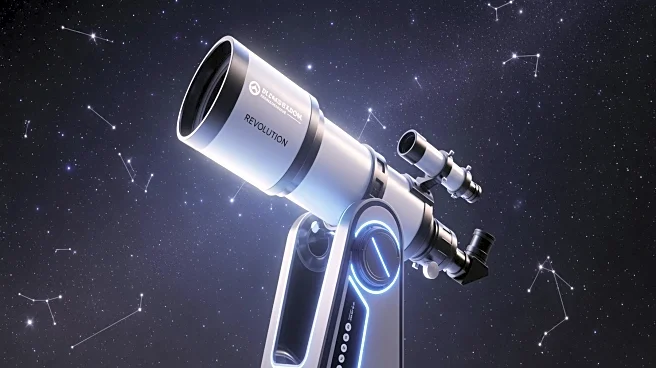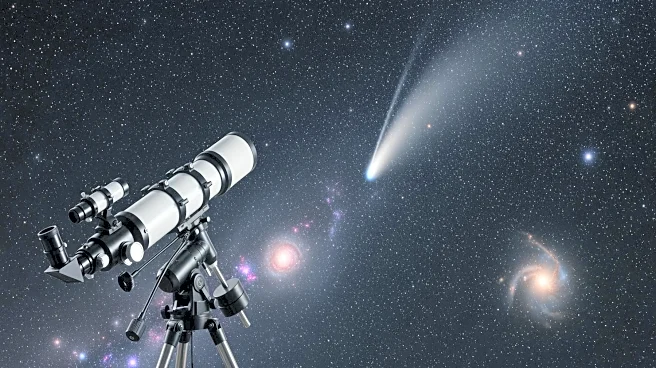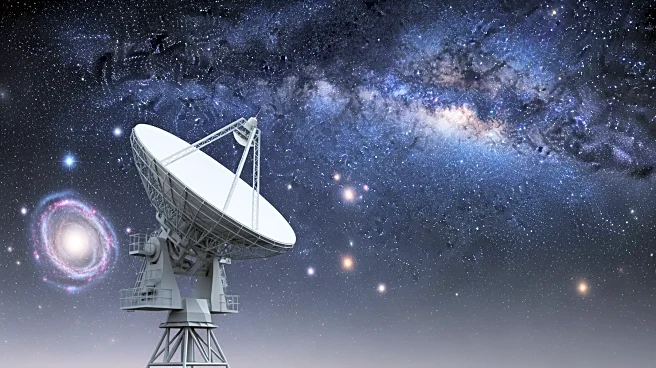What's Happening?
The ZWO Seestar S30 telescope is the latest entry in the smart-telescope market, designed to simplify astrophotography for users of all skill levels. This compact device features a 30-mm aperture apochromatic refracting telescope with a focal length of 150
mm and a focal ratio of f/5. It includes a one-shot color camera with a Sony IMX662 CMOS sensor, dual-axis drive motors, onboard Wi-Fi, and a rechargeable battery. The telescope is controlled wirelessly via a smartphone or tablet app, allowing users to capture high-quality images of deep-sky objects with minimal intervention. The S30's light-pollution filter and Intelligent Denoising function enhance image quality, making it possible to photograph challenging targets like nebulae and galaxies.
Why It's Important?
The introduction of the ZWO Seestar S30 represents a significant advancement in the accessibility of astrophotography. By reducing the complexity of capturing celestial images, the S30 allows more people to engage with astronomy and explore the night sky. This democratization of astrophotography can lead to increased public interest in space exploration and scientific research. The telescope's ability to capture high-quality images from light-polluted areas highlights the potential for technological solutions to overcome environmental challenges in astronomy.
What's Next?
As the smart-telescope market continues to grow, further innovations are expected to enhance the capabilities of devices like the ZWO Seestar S30. Future updates may include expanded imaging modes and improved connectivity options, allowing users to capture even more detailed images of the cosmos. The success of the S30 may inspire other companies to develop similar products, fostering competition and driving technological advancements in the field. Increased public engagement with astronomy could lead to more educational programs and initiatives, promoting scientific literacy and exploration.
Beyond the Headlines
The rise of smart telescopes like the ZWO Seestar S30 may have broader implications for the field of astronomy. By making astrophotography more accessible, these devices could inspire a new generation of amateur astronomers and contribute to citizen science initiatives. The integration of technology in astronomy raises questions about the balance between human expertise and automated systems, prompting discussions on the future of scientific research and observation. The S30's success may also influence the development of other smart devices, highlighting the potential for technology to transform various scientific disciplines.













